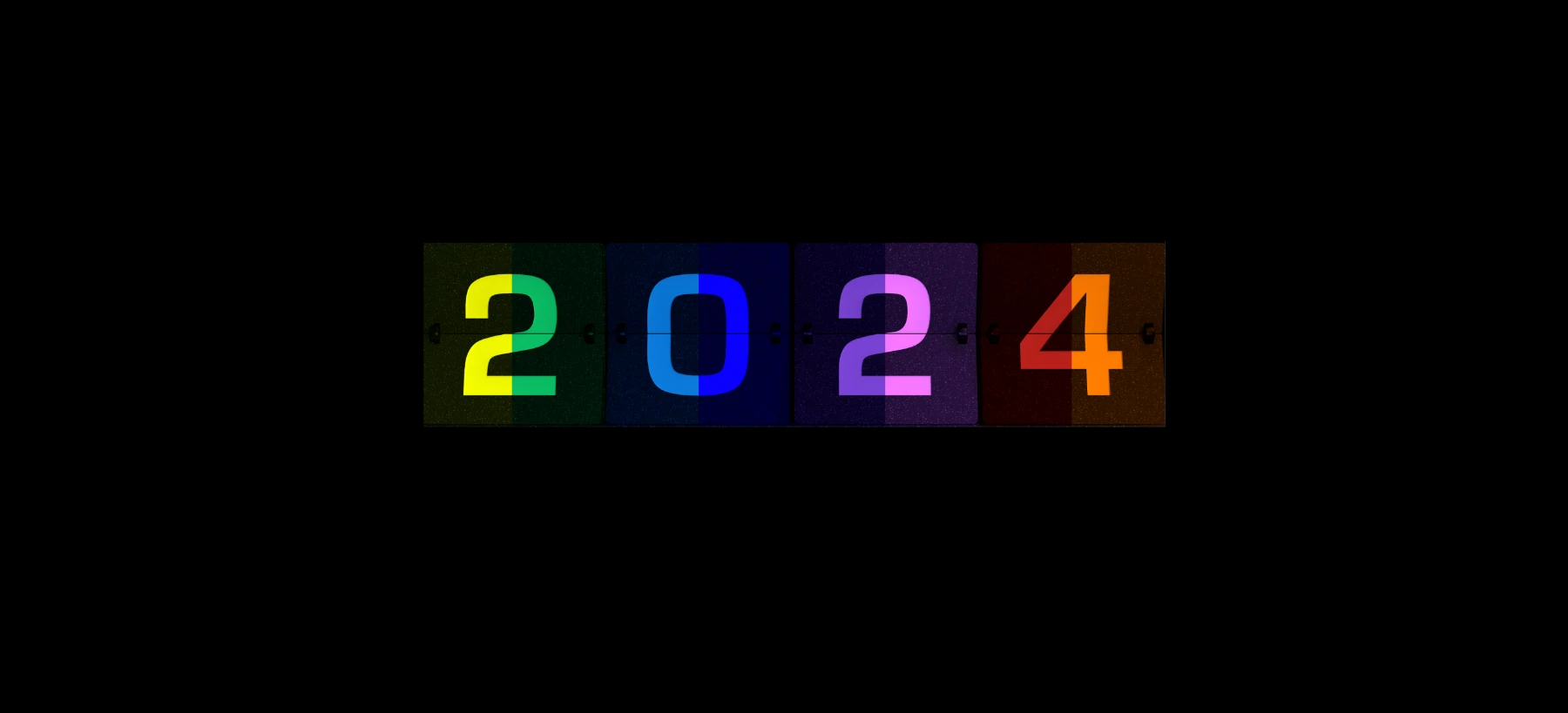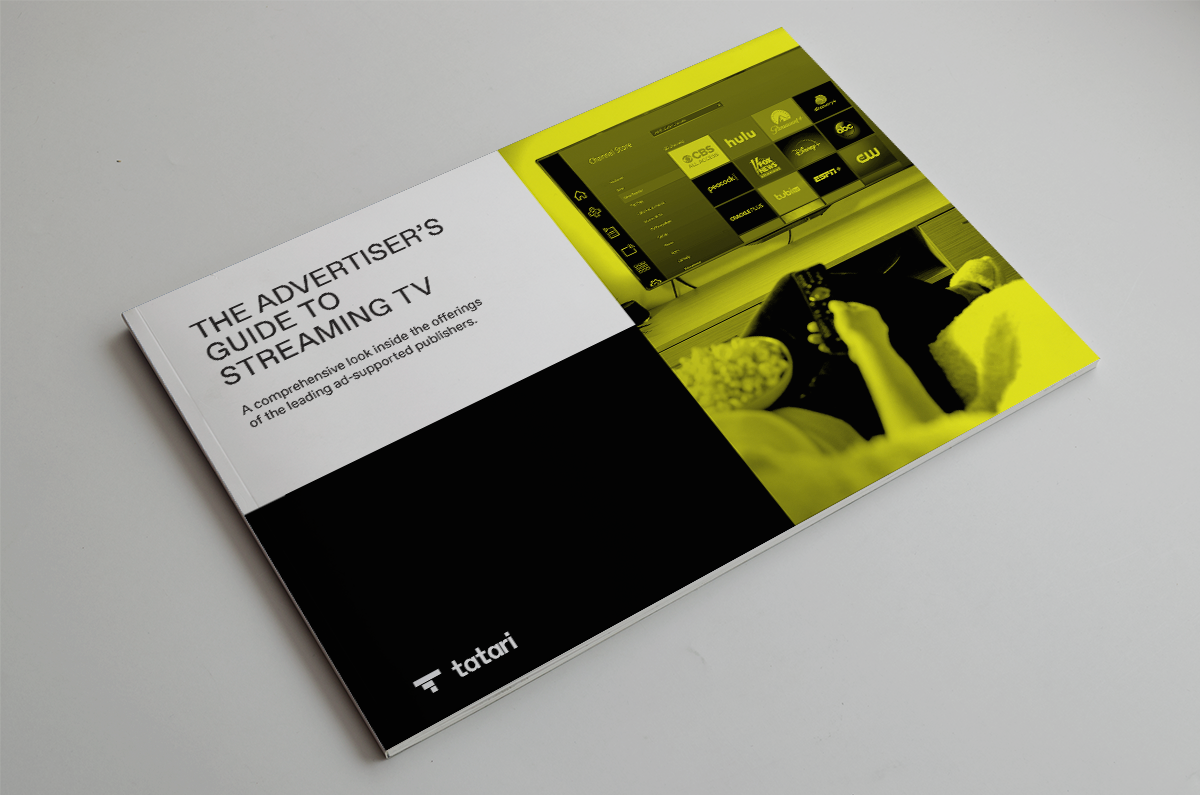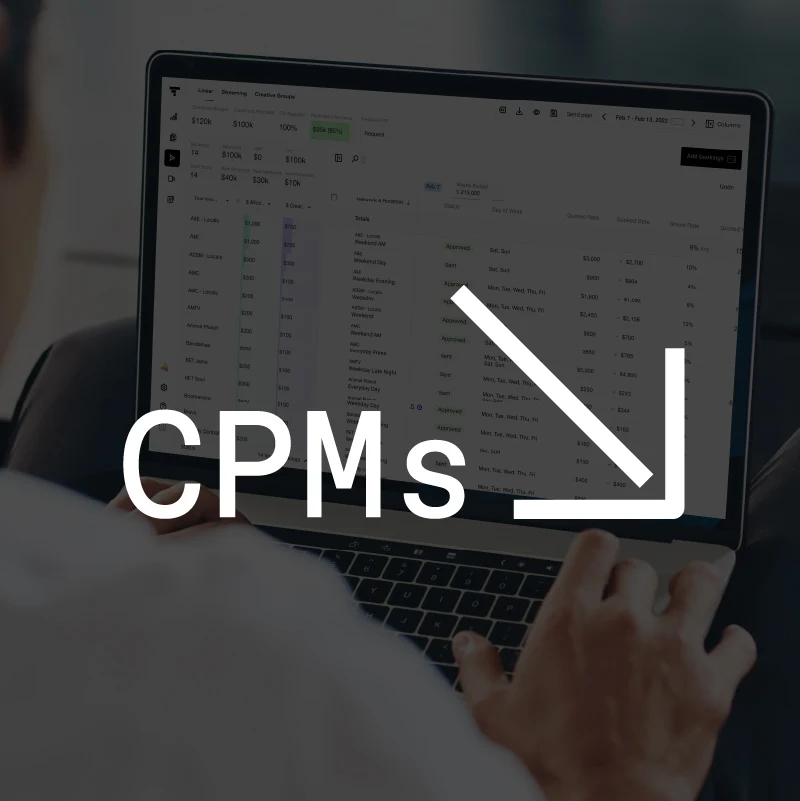
How to Budget for TV in 2024
As we approach the end of the year, we know that marketers are busy planning their advertising budgets for 2024. If you’re considering testing TV advertising, you must understand how the landscape is changing the latest market outlook.
In this blog post, we’ll highlight key TV trends for 2024, followed by a quarter-by-quarter breakdown highlighting seasonal characteristics, key events, and budget recommendations.
Three Key Trends by Platform for 2024
1) Streaming: Growing viewership and retargeting
Streaming is where we see the most viewership growth. The streaming audience is also incredibly valuable for advertisers—a large majority is incremental to linear, and they are also more likely to engage with ads. Based on Tatari client data from 2023, we typically see 3x higher response rates (calculated by the number of site visits, or app downloads, divided by impressions) for campaigns running on streaming vs linear. So, while streaming TV CPMs are typically higher than linear CPMs, the response rates offset the cost.
With major platforms like Netflix, Disney+, and Max transitioning to ad-supported models (AVOD), and Amazon Prime expected to join, 2024 presents a unique opportunity for advertisers to explore premium inventory. This shift offers a chance to engage with audiences through high-quality content environments.
Whether you’re a small brand or an established brand, retargeting on streaming TV is a cost-efficient way to reach customers who’ve already shown an interest in your product/service. In the case of Manscaped, their sales volume increased by over 30%, while their customer acquisition costs decreased by more than 50%.
If you want to take a more granular look at the offerings of all ad-supported streaming publishers, download our guide here.
2) Yes, streaming is growing. But don’t forget about Linear TV (and its low CPMs).
Take advantage of low linear CPMs and the firesales that come with softened demand. But, both linear & streaming TV should be used in concert for a successful campaign that drives business outcomes.
Linear TV offers broad reach, allowing brands to connect with a wide audience. However, adding streaming to the media mix can help increase your reach even further and will enable you to hit cord-cutters. Your reach is capped if you are only on linear TV, or vice-versa- if you are only on streaming.
3) Online video is a key component of CTV (Convergent TV)
More premium, long-form video content is being consumed from websites (both on personal devices and the big screen). For example, nearly half of YouTube viewership now takes place on a TV and is expected to increase even further. So for the modern TV advertiser, CTV should be redefined as Convergent TV (not connected TV); a combination of online video (OLV), streaming TV, and linear TV (i.e. cable, broadcast, and satellite) experiences. We envision the synergy between these three platforms becoming even stronger next year.
Adding online video to your linear and streaming buys has several benefits, which we discuss here.
Quarter-by-quarter recommendations
Q1: Take advantage of the remnant market, Superbowl-related programming, and News coverage of elections
Most marketers conclude ad campaigns before the holidays, so there are fewer advertisers on TV in January and February. There will likely be good opportunities within the remnant market, providing a space for savvy marketers to test.
The biggest TV event of the year, the Super Bowl, takes place on February 11. The 2023 game drew 115 million viewers across linear and streaming, making it the most-watched Super Bowl in history. Though 2024 Super Bowl ad spots are already sold out (at $6.5 - $7 million per 30-second spot!), this shouldn’t deter brands from capitalizing on TV’s biggest event. There are still a number of ways for smaller brands to get in front of large audiences interested in the big game.
Although elections aren’t until Q4, early primaries start in March, so news coverage will kick in. If you are interested in advertising on news programs, you may want to start in Q1 because competition for ad spots is expected to increase, and with that, clearance will dip. While some marketers may be hesitant to advertise their products & services during news coverage, there are contextual controls and plenty of historical performance data to suggest this can make sense for some brands.
In the streaming world, Amazon is expected to introduce ads in Prime Video in early 2024. Amazon says Prime Video will have limited commercials, noting there will be "meaningfully fewer ads than linear TV and other streaming TV providers."
Q2: Upfronts and Sports galore
For those who participate in the Upfronts, Q2 is a crucial time to begin planning and negotiations. Registration deadlines are in May, and negotiations kick off in the same month, making it essential to plan as soon as possible.
Q2 is home to many sports events, such as March Madness (last year, the Women’s Finals were the most watched game), and the NBA+ NHL Playoffs. Last year, the 2023 NBA Playoffs across ABC, ESPN and TNT averaged 5.47 million viewers, making it the most-watched playoffs in five years. We had 12 Tatari clients run ads in Game 6, Lakers VS Warriors. If sports is a big part of your TV advertising strategy, committing to guaranteed delivery via non pre-emptible (NPE) buys is advisable due to an anticipated tightening of inventory.
Q3: Olympics return, NFL kicks off, and time to lock in BFCM ads
As the sun shines brighter and the great outdoors beckon, there are fewer people watching TV. Early July is a great time to look at remnant and firesales opportunities. However, once the Olympics start, inventory will become tight.
The 2024 Paris Olympics, the first post-COVID 'normal' Games, anticipate a significantly larger audience than the Tokyo Olympics. NBCU reports unprecedented ad sales, having sold out multiple sponsorships. Notably, all events will stream on Peacock for the first time in Olympic history, projected to draw 20% to 25% of viewership. The most popular events are typically Swimming, Gymnastics, and Track & Field. Shift your budget into streaming if linear TV inventory is tight during the Olympic weeks.
The NFL continues to draw massive viewership every year. The average viewership per game (on streaming and linear TV) for the 2023 NFL season is up 9%, with Amazon seeing particular success, up 14% YoY! Certain teams and matchups will draw large audiences, and of course, Taylor Swift’s attendance can too.
While Black Friday/Cyber Monday (BFCM) isn’t until November, brands heavily reliant on Q4 holiday sales must begin booking placements well in advance. The most efficient rates in Q4 are often booked in early Q3, so begin your planning process as early as possible to set yourself up for success.
Lastly, as we gear up for the elections in November, primaries are in full swing. With 13 primaries each, June and August are the busiest months for state primaries. The first debate is also scheduled for September 16th. Brands advertising during the debates can expect high viewership and retention rates (continuing to watch to the end). Competition for ad spots is expected to be high, so plan early.
Q4: Elections, Holiday Peaks, and the Q5 Advantage
Come Q4, news networks will be dominating a majority of TV viewership due to the upcoming election in November. If news is essential to your media plan, we suggest locking in buys in advance via Non-preemptible (NPE) buys. Additionally, if this year’s presidential race is anything like 2020, we can expect an abundance of media coverage following election day (November 5th). In 2020, we worked with meditation app Calm to run ads on CNN during the election results. Their 30-second ad spot, which encouraged people to relax, paired with “key race alerts” (a sponsorship also arranged via Tatari) won them marketer of the year and helped substantially boost earned media buzz, awareness, and downloads.
Q4 also hosts major advertising tentpole events like Black Friday, Cyber Monday, and gift-giving holidays. Historically speaking, Q4 tends to bring the tightest marketplace of the year for TV ad inventory so be sure to lock in inventory in Q3, via NPE buys. However, a Q4 or BFCM TV campaign may not be the right play for every brand; and marketers who didn’t run one or still want to make a final push before the year closes can look to “Q5” as a golden opportunity. For brands with products that are centered around health- Q5 is also a great time to jump in while people are making conscious efforts for change in the new year.
Cheers to a great year, and an even better 2024.
If you’re interested in making TV a key part of your advertising strategy in 2024, schedule a call with us here!

Dana Delle
I'm a strategist at Tatari and love watching TV after my 3 kids go to bed.
Related
The Advertiser's Guide to Streaming TV
This white paper takes a granular look at some of the major ad-supported players. This includes a variety of details related to each streaming service’s audience, content, and advertising opportunities.
Read more
What’s Driving Down Linear CPMs?
A delve into data and market dynamics that are driving down linear CPMs, and how advertisers can take advantage of them.
Read more
CTV stands for Convergent TV, not Connected TV (and what this really means for TV advertisers)
In this article, we will unpack OLV and most importantly, the relevance of OLV to the old definition of Connected TV (making for a new Convergent TV).
Read more


